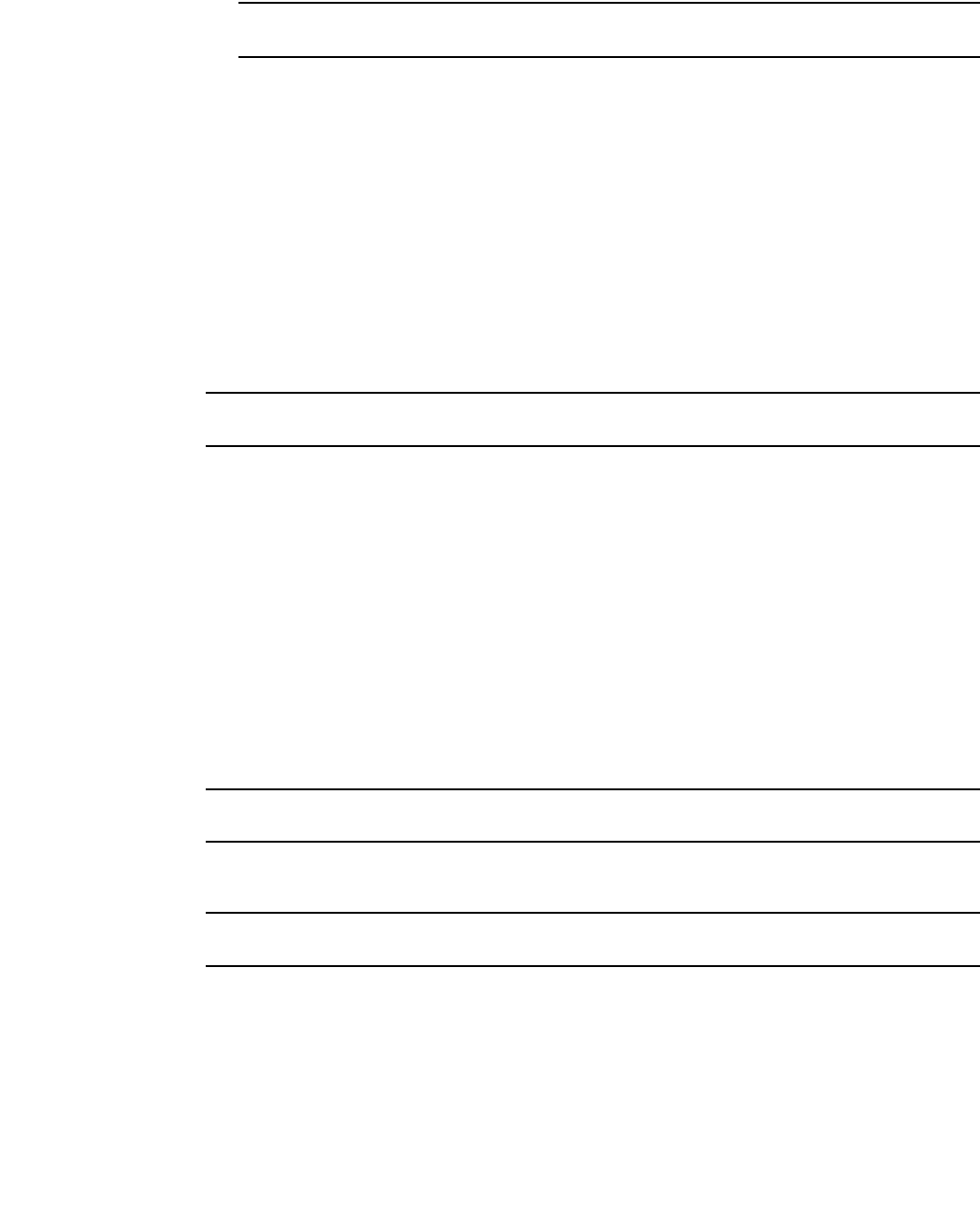Home Theater Server User Manual
Table Of Contents
- Contents
- About This Document
- Network Security
- TCP SYN attacks
- IP TCP syn-proxy
- Granular application of syn-proxy feature
- Syn-def
- No response to non-SYN first packet of a TCP flow
- Prioritizing management traffic
- Peak BP utilization with TRAP
- Transaction Rate Limit (TRL)
- Understanding transaction rate limit
- Configuring transaction rate limit
- Configuring the maximum number of rules
- Saving a TRL configuration
- Transaction rate limit command reference
- Global TRL
- TRL plus security ACL-ID
- security acl-id
- Transaction rate limit hold-down value
- Displaying TRL rules statistics
- Displaying TRL rules in a policy
- Displaying IP address with held down traffic
- Refusing new connections from a specified IP address
- HTTP TRL
- Overview of HTTP TRL
- Configuring HTTP TRL
- Displaying HTTP TRL
- Display all HTTP TRL policies
- Display HTTP TRL policy from index
- Display HTTP TRL policy client
- Display HTTP TRL policy starting from index
- Display HTTP TRL policy matching a regular expression
- Display HTTP TRL policy client index (MP)
- Display HTTP TRL policy client index (BP)
- Display HTTP TRL policy for all client entries (BP)
- Downloading an HTTP TRL policy through TFTP
- HTTP TRL policy commands
- Logging for DoS Attacks
- Maximum connections
- clear statistics dos-attack
- Maximum concurrent connection limit per client
- Firewall load balancing enhancements
- Syn-cookie threshhold trap
- Service port attack protection in hardware
- Traffic segmentation
- DNS attack protection
- Access Control List
- How ServerIron processes ACLs
- Default ACL action
- Types of IP ACLs
- ACL IDs and entries
- ACL entries and the Layer 4 CAM
- Configuring numbered and named ACLs
- Modifying ACLs
- Displaying a list of ACL entries
- Applying an ACLs to interfaces
- ACL logging
- Dropping all fragments that exactly match a flow-based ACL
- Enabling ACL filtering of fragmented packets
- Enabling hardware filtering for packets denied by flow-based ACLs
- Enabling strict TCP or UDP mode for flow-based ACLs
- ACLs and ICMP
- Using ACLs and NAT on the same interface (flow-based ACLs)
- Displaying ACL bindings
- Troubleshooting rule-based ACLs
- IPv6 Access Control Lists
- Network Address Translation
- Syn-Proxy and DoS Protection
- Understanding Syn-Proxy
- Configuring Syn-Proxy
- DDoS protection
- Configuring a security filter
- Configuring a Generic Rule
- Configuring a rule for common attack types
- Configuring a rule for ip-option attack types
- Configuring a rule for icmp-type options
- Configuring a rule for IPv6 ICMP types
- Configuring a rule for IPv6 ext header types
- Binding the filter to an interface
- Clearing DOS attack statistics
- Clearing all DDOS Filter & Attack Counters
- Logging for DoS attacks
- Displaying security filter statistics
- Address-sweep and port-scan logging
- Secure Socket Layer (SSL) Acceleration
- SSL overview
- SSL acceleration on the ServerIron ADX
- Configuring SSL on a ServerIron ADX
- Basic SSL profile configuration
- Advanced SSL profile configuration
- Configuring Real and Virtual Servers for SSL Termination and Proxy Mode
- Configuration Examples for SSL Termination and Proxy Modes
- SSL debug and troubleshooting commands
- Displaying socket information

ServerIron ADX Security Guide 29
53-1002440-03
HTTP TRL policy commands
1
• <holddown-interval>—specifies the length of hold down period, if client exceeds rate limit in
term of minutes.
NOTE
Value 0 means do not hold down. Hold down holds all traffic.
Example
ServerIronADX(config-http-trl-p1)# default monitor-interval 1 10 20 0
Default max-conn
Use the default max-conn option in the http-trl-policy configuration mode to set default maximum
connection parameters.
Syntax: [no] default max-conn <max-conn-value>
<max-conn-value>—specifies maximum number of connections client can setup.
Example
ServerIronADX(config-http-trl-p1)# default max-conn 10
NOTE
Max-conn currently supports only HTTP/1.0.
Default exceed-action
Use the default exceed-action option in the http-trl-policy configuration mode to set the action to
take if a default exceeds the configured rate limit.
Syntax: [no] default exceed-action [reset | drop]
[reset | drop] specifies default request be reset or dropped if the limit is exceeded.
Example
ServerIronADX(config-http-trl-p1)# default exceed-action [reset | drop]
Syntax: [no] default exceed-action redirect <domain> <url> [port]
<domain> and <url>—specifies client request to be redirected to this new URL, if limit is exceeded.
NOTE
Use an asterisk (*) to keep the same domain or url.
ServerIronADX(config-http-trl-p1)# default exceed-action redirect *
/new/exceed.html http
NOTE
The same domain is used in the incoming packet.
The optional [port] specifies the new TCP port number for the redirected URL.
ServerIronADX(config-http-trl-p1)# default exceed-action redirect www.yahoo.com
/exceed.html http










